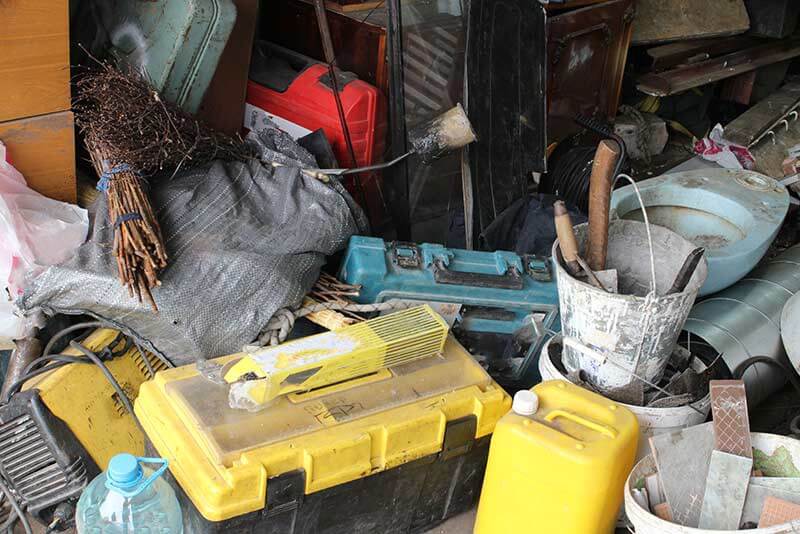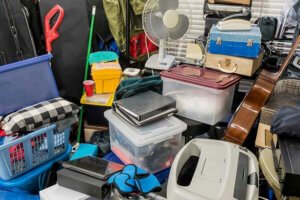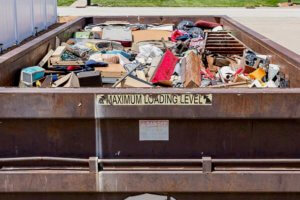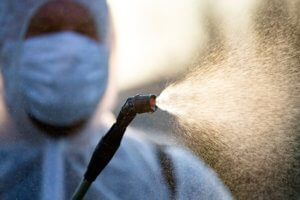BLOG

How To Clean A Hoarder House
Looking to clean a hoarder house? While it can be a daunting task, it is an important step in helping a loved one who may be struggling with a hoarding disorder. In this article, we will discuss hoarding disorders and provide a step-by-step guide for how to effectively clean a hoarder house.
What Is A Hoarding Disorder?

A hoarding disorder is a mental health condition characterised by the excessive acquisition of and inability to part with possessions, even if they have little or no value. It is often associated with feelings of distress and anxiety about getting rid of items, as well as a difficulty organising and managing possessions. Hoarding disorder can lead to cluttered and unsafe living conditions and it can have a negative impact on the person’s physical and mental health.
Hoarding disorder can have serious consequences for the person experiencing it and for their loved ones. It can lead to social isolation, as the person may be embarrassed about the state of their home and may avoid inviting friends or family over. It can also have a negative impact on the person’s physical health, as cluttered living conditions can increase the risk of falls, fires and other accidents. Hoarding disorder can also interfere with the person’s daily activities and their ability to work and function normally.
What Do Hoarders Collect?
People with hoarding disorder may accumulate a wide variety of items, including clothing, books, paper and even trash. They may feel a strong emotional attachment to these items and may struggle to make decisions about what to keep and what to get rid of. As a result, their living space may become cluttered and cramped, making it difficult to move around and access basic amenities.
Managing Hoarding Disorders

Hoarding disorder is often associated with other mental health conditions, such as anxiety, depression and obsessive-compulsive disorder (OCD). It is not uncommon for people with hoarding disorder to also struggle with decision-making, problem-solving, and organisation.
Hoarding disorder can be a difficult and complex condition to manage, but with the right treatment and support, it is possible to make progress and improve the person’s quality of life. If you or a loved one is struggling with hoarding disorder, it is important to seek help from a mental health professional.
Cleaning A Hoarder House: Step By Step

If you have a loved one who is a hoarder, it is important to approach the situation with compassion and understanding. Hoarding is a complex issue that is often rooted in deep-seated emotional issues, and it is not something that can be easily resolved. However, by taking a structured and organised approach, it is possible to help your loved one begin the process of cleaning and decluttering their home by following the steps below.
Step 1: Establish a plan of action
Before you begin cleaning, it is important to establish a plan of action. This should include setting clear goals, determining the scope of the project, and establishing a timeline for completion. It may also be helpful to involve a professional organiser or therapist who has experience working with hoarders.
Step 2: Begin the decluttering process
Once you have a plan in place, it is time to start decluttering. This process should be done gradually, as it can be overwhelming for a hoarder to part with their possessions all at once. Start by focusing on one room or area at a time, and work slowly and methodically. Encourage your loved one to make decisions about what to keep and what to discard, but be prepared to offer support and guidance if necessary.
Step 3: Sort and categorise items
As you declutter, it is important to sort and categorise items into piles, such as “keep,” “donate,” “sell,” and “rubbish.” This will make it easier for your loved one to make decisions about what to do with their possessions. It may also be helpful to involve a professional organiser who can help with the sorting process.
Step 4: Dispose of items
Once you have sorted and categorised items, it is time to dispose of those items that are no longer needed. This may involve donating items to charity, selling them at a garage sale or online, or simply throwing them away. It is important to follow local laws and regulations when disposing of items, particularly if they are hazardous or toxic.
Step 5: Clean and organise
Once the decluttering process is complete, it is time to begin the cleaning process. This may involve dusting, vacuuming and scrubbing surfaces to remove dirt and grime that has accumulated over time. It is also important to organise items that are being kept in a way that is functional and efficient. This may involve using storage containers, bins and shelves to help keep things organised.
Step 6: Maintain the progress
Cleaning and decluttering a hoarder house is a long-term process and will likely require ongoing maintenance. It is important to establish a routine for keeping the house clean and organised, and to involve your loved one in the process. This may involve setting aside a specific time each week to tackle clutter, or implementing a system for deciding what to do with new items as they come into the house.
Cleaning a hoarder house can be a challenging and emotional process, but it is an important step in helping a loved one who is struggling with hoarding disorder. By taking a structured and organised approach, and involving professionals when necessary, it is possible to help your loved one begin the process of decluttering and creating a safe and functional living space.
Need A Hand With Professional Hoarder House Cleaning?

For more than three decades, National Trauma (NTCSC) have been the go-to choice to clean a hoarder house in Australia. Our team of compassionate and thorough professional cleaners have the experience needed to assist with all your biohazard cleaning and waste disposal needs. If you need help with hoarder house cleaning, don’t hesitate to give us a call anytime, 24/7, for a no-obligation quote.

